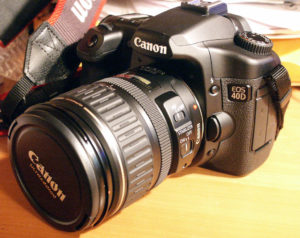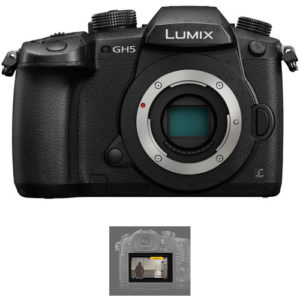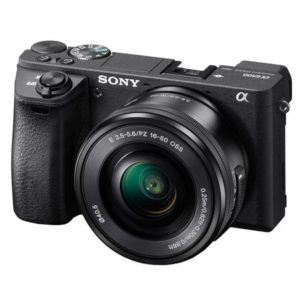All those reviews
I’ve been researching digital cameras quite a lot lately. I need something that produces better and more repeatable results than my smartphone, but I had to give this quite a lot of thought. There are a lot of very good, thorough photography and videography reviews out there, but you have to listen between the lines – what sort of results is this reviewer interested in? Chances are, the reviewer is going for an aesthetically pleasing result, whether the subject be brides or birds. There is nothing wrong with that, but the review is most often from that point of view. What we as field investigators are looking for is something different. So, when doing your research, keep that in mind.
Too Many Choices
Camera technology has vaulted ahead since I bought my Canon EOS 40D years ago – the last time I really looked into this. BTW, my EOS 40D is built like a tank and is still in great condition. Almost every camera shoots video now, and there are a wide range of options. Olympus, Panasonic and Sony have broken into the higher end of things alongside Canon and Nikon with some really good gear, and the old DSLR architecture has serious competition from the more compact mirrorless cameras. Things like autofocus, video resolution, and low light sensitivity have come a long way.
This is overall a good thing, but it’s like being in a candy store and your mom says you can only have 1 handful – it can be agonizing. you can do a lot to narrow things down by not starting with the technology, but with what your requirements are. Let me make a few suggestions.
Getting to What We Actually Need
You have to consider a few Design Reference Missions – in what scenarios do you need a camera, and in what conditions? There are the common uses, and some extraordinary but important circumstances when you want to be ready for anything:
- The common scenario – you are walking around at a field site and you want to record details of the scene to match up to maps later. There is no physical evidence to document, just landmarks and relative geometries.
- The limited physical evidence search – if you think the evidence is in a limited area, you will establish a grid, photograph it extensively, and if anything is found, you photograph it in situ with reference markers (a ruler, etc.) before bagging and tagging it. You may also want video of your colleagues doing these things. GPS geotagging is really useful here. You want to be able photograph very closely and with lots of good detail in a wide variety of lighting conditions.
- Broad area searches – here you are walking around, taking some video as well as stills, looking for everything from disturbed vegetation to landing traces. Weather and lighting are highly variable, but it will most likely be during the daylight hours. Geotagging is essential here.
- Sky watching – here we have mostly video, and the widest range of lighting conditions. Generally, a telephoto capability is needed, as it the capability to get clean video of very bright sources against a dark background (something smartphones do very poorly). You can probably use manual focus since everything is distant, but if you use autofocus, it can’t hunt too much, so autofocus is pretty much limited to daytime. Image stabilization is important, because you will be panning handheld or using a monopod for stills. For video, you may need a gimbal or fluid head mounted on a tripod.
- Training and outreach – this is mostly video, but you may want to add some stills to the B roll. Autofocus is nice. You will want good audio quality as well, which may mean adding a cage to your camera to mount audio gear. You will probably have some control over lighting, and be able to carry more audio gear and a tripod.
- Sudden opportunities – this is where you need the most performance and flexibility from your equipment, although not very often. Weather and lighting can be highly variable. You might be in a moving car or aircraft. Fast, reliable autofocus and image stabilization are important.
The Real Requirements
As an engineer, I feel the word “requirement” should mean just that – each requirement is a necessary condition for success. No nice-to-haves allowed.
- Image and video quality needs to be good under a wide range of conditions, instead of really great under controlled conditions. You are not going for the aesthetic of the fashion
photographer. For this reason, you don’t need to have the most megapixels or the widest dynamic range possible. A crop-frame sensor may meet your requirements and budget better than full frame.
- You need light, easily packable gear. You can’t always take a lot of lenses or a tripod, or lighting equipment. Even a monopod might be a bit much in some cases. Keep in mind that a big part of the bulk is the lens(es).
- You need equipment that holds up well under a wide range of environments, including dust, water, heat, and cold.
- You need snappy, reliable focusing. When looking at a distant object through a telephoto, the focus should not hunt.
- You need image stabilization – either in body or with the lens, or both. For video, you might also want to consider a steadicam, or gimbal, but that is extra weight and bulk, so maybe save that for the training and PR work. Tripods are fine if your subject isn’t moving much, but you won’t see sports or wildlife photographers with tripods very often.
- You need good low light sensitivity, and the ability to handle a wide variety of exposure situations that you can’t control. Faster lenses or speed boosters can help, but are expensive.
- You need a diversity of focal lengths without sacrificing the above – in other words, interchangeable lenses. In general, wide focal lengths for video, longer for stills.
- You need a way to do geotagging for some of the missions.
- You need to be able back up your camera’s battery in the field, either by taking multiple batteries with you, a battery grip, or by use of a portable charging battery.
- You need a camera that boots up and is ready to shoot in the time it takes you to get the lens cap off.
But Here are Some Nice to Haves
There are s few things that you don’t need for field work, but also don’t get in the way much either:
- A headphone jack so you can monitor audio. If you are serious about audio, you will probably not record it in the camera, but if you do…
- 4K video. Full HD should be good enough, but given the way video has been moving, this future proofs it a bit.
- Built in flash – you won’t use it much, but nice to know it’s there.
- 2 SD card slots. SD cards don’t fail often, but when one does, you can lose all your images and video.
- Custom settings buttons – lets you switch settings really fast.
- A flip screen that can change directions. This is great if you are a one man band in the field and want to shoot some video of yourself talking, but you can also buy a small monitor screen that serves the same purpose (and has a headphone jack).
- Remote control.
- Focus peaking – a way to improve manual focus.
- Custom settings. Many cameras now support this, so you can quickly recall a bunch of settings (ISO, focus mode, metering mode, shutter control, and much more) for a particular situation: nighttime long lens vs. daytime short lens, for example.
- Eye tracking – useful when you have a human subject who is moving around.
Your Decision
Even though smartphone cameras keep getting better, they have inherent limitations: tiny apertures, short focal lengths, and small sensors. It will always be possible to do better with a dedicated camera, and especially a camera with interchangeable lenses.
There probably is no one best camera for the field, and of course budget is a consideration. Of the six missions above, maybe you think you’ll only be doing 2-3 of them,and of course that would alter your decision. If it’s only missions 1-3, then I like the relatively cheap Olympus Tough TG-Tracker, which is waterproof and does geotagging and 4K video, but only has wide angle capability. If you plan to work only out of your vehicle, then weight and packability may not be important to you, so the bulkier Canon DSLRs might start looking good, as well as an assortment of tripods.
Even if you can afford any camera body on the market, you will also need to put about the same money or more into lenses, which can cost much more. Set your budget, then knock off about $1000 for lenses and accessories (which may be optimistic). Then, pick the best camera that can meet your requirements in the price range.
You can save money by buying used. Lenses that are well cared for can last many years, so your best bet may be to get yours on the secondary market. You can also buy adapters that let you use lenses you already have.
The important thing is that you are not trying to get your images on the cover of Vanity Fair, or National Geographic. Maybe the New York Times, though. Let’s get out there and start documenting.






